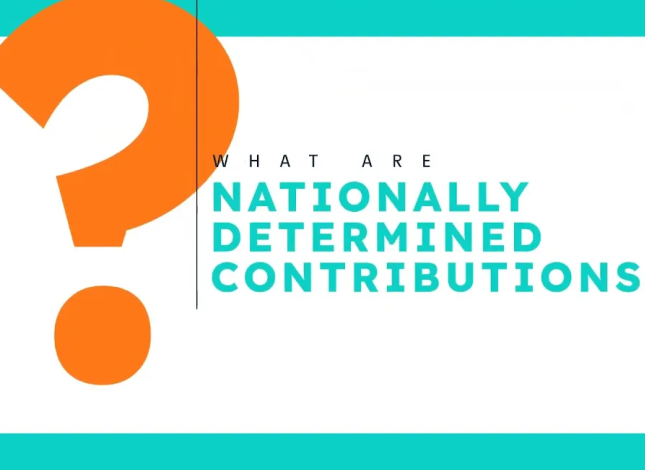COP27 and the Nationally Determined Contributions (NDCs)

For the past two weeks we saw World leaders, Country representatives, Climate Activists and Governments gather at COP27 with missions including checking Countries progress in flighting Climate Change that is assessing countries Nationally determined contributions (NDCs). Thus in celebration of the successful wrap up of COP 27, this articles defines what NDCs are?
What are Nationally determined contributions (NDCs)?
Nationally determined contributions (NDCs) are at the heart of the Paris Agreement and the achievement of its long-term goals. NDCs embody efforts by each country to reduce national emissions and adapt to the impacts of climate change. The Paris Agreement (Article 4, paragraph 2) requires each Party to prepare, communicate and maintain successive nationally determined contributions (NDCs) that it intends to achieve. Parties shall pursue domestic mitigation measures, with the aim of achieving the objectives of such contributions.
What does this mean?
The Paris Agreement requests each country to outline and communicate their post-2020 climate actions, known as their NDCs.
Together, these climate actions determine whether the world achieves the long-term goals of the Paris Agreement and to reach global peaking of greenhouse gas (GHG) emissions as soon as possible and to undertake rapid reductions thereafter in accordance with best available science, so as to achieve a balance between anthropogenic emissions by sources and removals by sinks of GHGs in the second half of this century. It is understood that the peaking of emissions will take longer for developing country Parties, and that emission reductions are undertaken on the basis of equity, and in the context of sustainable development and efforts to eradicate poverty, which are critical development priorities for many developing countries.
Submissions of NDCs
The Paris Agreement recognizes that the long-term goals specified in its Articles 2 and 4.1 will be achieved through time and, therefore, builds on a ratcheting up of aggregate and individual ambition over time.
NDCs are submitted every five years to the UNFCCC secretariat. In order to enhance the ambition over time the Paris Agreement provide that successive NDCs will represent a progression compared to the previous NDC and reflect its highest possible ambition.
Parties are requested to submit the next round of NDCs (new NDCs or updated NDCs) by 2020 and every five years thereafter (e.g. by 2020, 2025, 2030), regardless of their respective implementation time frames.
Moreover, Parties may at any time adjust their existing nationally determined contribution with a view to enhancing its level of ambition (Article 4, paragraph 11).
For information on the NDC Synthesis Report, click here.
Taking stock and informing the preparation of successive NDCs
Starting in 2023 and then every five years, governments will take stock of the implementation of the Agreement to assess the collective progress towards achieving the purpose of the Agreement and its long-term goals. The outcome of the global stocktake (GST) will inform the preparation of subsequent NDCs, in order to allow for increased ambition and climate action to achieve the purpose of the Paris Agreement and its long-term goals. To learn more about the GST click here.
In 2018 the COP convened a facilitative dialogue among Parties to take stock of the collective efforts of Parties in relation to progress towards the long-term and to inform the preparation of the next round of NDCs. To learn more about the Talanoa Dialogue in 2018 click here.






